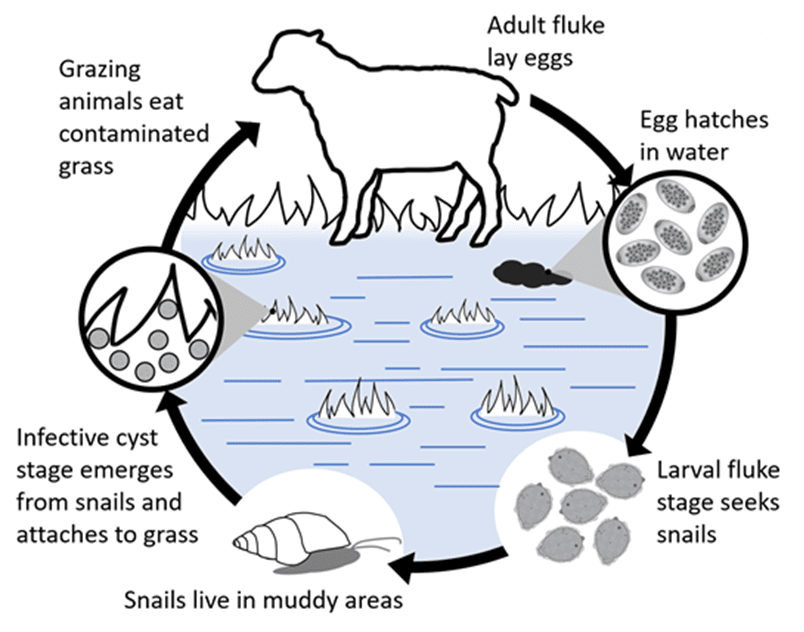LIVER FLUKE

The liver fluke parasite, Fasciola hepatica, infects the liver of both cattle and sheep. Adult fluke are 2 to 3cm in size and live in the bile ducts laying eggs which enter the animals intestinal tract and end up on pasture.
How liver fluke causes damage
To understand how liver fluke does its damage, it is essential to know what the liver does. The main functions are:
- metabolism of carbohydrate, protein and fat: the liver is the organ that uses the food we digest
- storage of vitamins
- breakdown of waste
- aiding the immune system
- important in hormonal control of the body
After being ingested by the grazing host, the metacercaria cysts develop into early immature fluke. The early immature and immature fluke migrate to the liver, which they then tunnel through to the bile duct, causing damage to the cells of the liver and blood vessels.
Depending on the number of fluke in the liver, the effects can range from death to loss of productivity as the liver is not processing all the food for the animal’s needs.
- Acute fluke: when an animal ingests lots of cysts (1500+), often the liver is damaged so badly the animal dies. This is often referred to as acute fluke. As the number of cysts on pasture are generally highest in the autumn and early winter, we tend to see the most severe disease in the autumn.
- Chronic fluke:If the number of fluke ingested is less than around 500, the sheep may not die, but the fluke will continue to migrate through the liver to the bile ducts where they will feed on blood. The liver damage and blood loss will cause the animal to lose weight, and may cause pregnant animals to abort. A classic sign of liver fluke is bottle jaw (accumulation of fluid) which can be seen under the jaw or under the belly. This happens becuase the liver damage and blood loss also decreases the level of proteins in the blood, allowing fluid to leak out of the circulation and accumulate in the tissues. Depending on the level of liver damage these animals can recover but may never perform as well again.
In many cases we may see no visible signs of liver fluke damage but they are still affecting the productivity of the animal. It all hinges on the fact that the liver is the main food processing organ of the body and if it is damaged then animals will not utilise their food properly which can lead to loss of liver weight gain or poor production of milk.
Productivity losses due to subclinical fluke infection
All stages of liver fluke cause damage as they migrate through the liver and then feed on blood in the bile ducts. Larger numbers of fluke will cause obvious disease or even sudden deaths. Small numbers (ie less than 10) of fluke may not cause any obvious disease, but because of the damage they cause to the liver, and the blood loss associated with feeding in the bile duct, they will always have a significant impact on productivity and flock or herd performance.
In a large slaughterhouse study of cattle¹
- those infected with 10 or less fluke at slaughter took on average 31 days longer to reach slaughter weight
- those infected with more than 10 liver fluke at slaughter took on average 77 days longer to finish.
In sheep flocks it can be more difficult to identify the losses associated with these low level subclinical infections, but this case study gives an example of how far reaching these losses can be.
